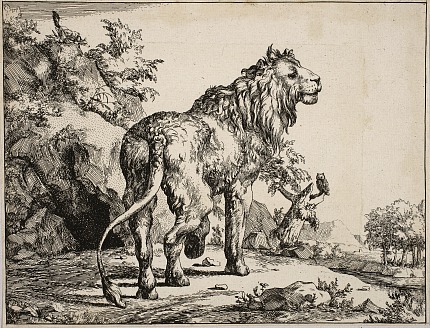He was a very brave man, but he was not a fool. He did not return to Poland when the war was over.
He did donate an art collection to the National Museum in Warsaw after the war.
At the link above we learn Dembinski was
...... Honored with the Virtuti Militari Cross and four times with the Cross of Valour, he was also a knight of the French Legion of Honor and of many other Polish and foreign decorations.
General Dembiński combined virtues of a brilliant officer, patriot, teacher and community worker with his passion for art and collecting. He managed to collect over two thousand prints and albums. Aside from such masterpieces as prints by Lucas van Leyden, Cornelis Cort, Carraccis, Hollar, Bartolozzi, Earlom and graphics from the School of Rubens, the collection comprises works by less known artists, bearing testimony, however, to Dembiński’s expert knowledge of European art. Among these are works on the themes of animals, mythology, landscapes, genre and portraits. Such a big and diverse set gives an idea of the achievements of European graphic art from the 16th to the 19th century, showing characteristics of different schools (for example fine English mezzotints from the 18th century) and pointing to the collector’s fields of interest. This collection, structured and organised by fixed criteria, was given by General Stefan Dembiński [to] the National Museum in Warsaw in 1957 and has remained since then the most generous post-war donation to the Museum as far as old graphics are concerned.
Here is a picture of one of the prints referenced above.

The attribution is:
Marcus De Bye (De Bie) (1639 – ok. 1690) after Paulus Potter (1625 − 1654)
Lion, 1664
Etching, paper, 16,2 x 21,4, cut
Dembinski's lion illustrates also, a royalty of bravery.
No comments:
Post a Comment